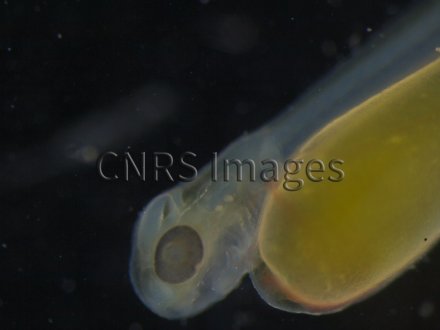Production year
2016

© Xavier COLOMBET/LEHNA/CNRS Images
20170047_0015
Barbel larva, Barbus barbus, 4 days after hatching, in which the otoliths – mineral concretions found in the inner ear of vertebrates – can be distinguished (in brown). Otoliths are different shapes depending on the species. It is possible to use them to estimate the age of a fish in days by counting the successive daily deposits of CaCO3 (calcium carbonate). Otoliths can also be used to work out an approximate hatching date, and thereby the length of the reproductive period of the species. Otoliths are also found in the digestive tracts of piscivorous fish. By analysing their shape, we can identify the species they came from and find out about the diets of these fish. Good understanding of the characteristics of the barbel life cycle helps research scientists target actions to promote the ecological restoration of this species. Indeed, the life cycle of the barbel, which is present in several areas of the Rhône, is affected by the numerous hydroelectric developments present.
The use of media visible on the CNRS Images Platform can be granted on request. Any reproduction or representation is forbidden without prior authorization from CNRS Images (except for resources under Creative Commons license).
No modification of an image may be made without the prior consent of CNRS Images.
No use of an image for advertising purposes or distribution to a third party may be made without the prior agreement of CNRS Images.
For more information, please consult our general conditions
2016
Our work is guided by the way scientists question the world around them and we translate their research into images to help people to understand the world better and to awaken their curiosity and wonderment.